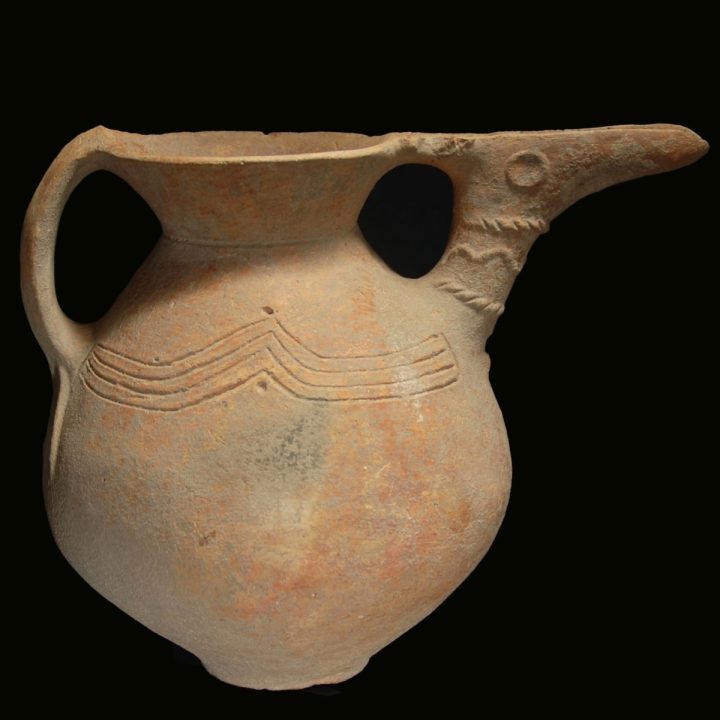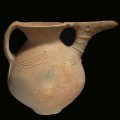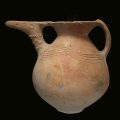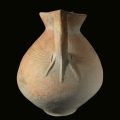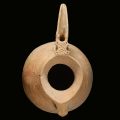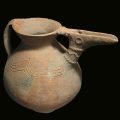Northwestern Iranian Beak-Spouted Jug
Culture: Iran
Period: 1200-1000 B.C.
Material: Terracotta
Dimensions: 23.3 cm high
Price: 1 800 Euro
Ref: 6525
Provenance: German private collection, O. Schwarzwälder since 1980.
Condition: Intact
Description: Very beautifully preserved and large beak-spouted jug of light clay with a zoomorphic spout. The bulbous body stands on a slightly set off foot ring. The upper half is decorated with four parallel engraved bands that form a wave. Above and below the wave an engraved dot. In the front a separately worked out spout rises from the wall. String ornaments are applied in high relief on the neck. The spout itself has a slit-shaped opening, round eyes make it look like a stylized bird’s head. An x-shaped bridge at the top connects the spout with the large pouring hole at the top. The bridge is decorated with dots and lines at the top. On the back of the funnel-shaped pouring hole the semi-circular handle with a central ridge rises above. It ends on the shoulder and fades in three protruding ribs which should symbolize bird crawls. An extraordinarily beautiful beak-spouted jug from Luristan in northwestern Iran. Similar jugs were made from around 1400 to 800 B.C. from the central Persian region to Anatolia, with those with engraved decoration being found primarily in the northwest on the border with Azerbaijan. Compare other beak-spouted jugs in the Harvard Art Museum with the object number 1937.12, in the British Museum with the registration number 1933,1211.1 or in the Smithsonian National Museum of Asian Art with the accession number S2014.1.



